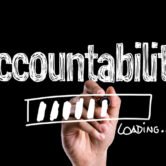It’s Impossible to Explain: Administering Punishment to Adults

We’re smart people so it’s impossible to explain why, in the world of HR and management, we still find ourselves mired in the age-old tradition of punishing employees for their shortcomings? It’s a question that’s been on our minds lately, and we can’t help but challenge the prevailing norms. We believe there’s a better way, a more progressive and respectful approach to dealing with performance and behavior issues in the workplace.
The Overemphasis on Punishment
Walk into any HR seminar or webinar, and you’re likely to find numerous sessions dedicated to dealing with so-called “toxic” employees or those dreaded “employees from hell.” It’s as if we’re fixated on this small minority while overlooking the vast majority of employees who perform their duties diligently day in and day out. Is this obsession with punitive measures truly justified?
The Trouble with Punishment
The term “discipline” has long been associated with punishment. But should we really be in the business of punishing the people who work for us? Here’s the crux of the matter: Punishment, in its purest form, isn’t instructive. It can’t teach a new behavior or address the root of a problem. Yes, it might temporarily deter someone from undesirable actions or coerce them into better behavior, but this approach is fundamentally flawed.
The Pitfalls of Punishment
When we punish employees, it usually takes the form of verbal and written warnings, suspensions, or even termination. Performance Improvement Programs (PIPs) are, in essence, a dressed-up way of holding the threat of firing over someone’s head for 30, 60, or 90 days. But let’s be honest—the results are usually a foregone conclusion and rarely positive.
Consider these consequences:
⦁ The “Bad Apple” Game: Some individuals become experts at working the system, continuously causing problems for months or even years. Their personnel files might be three inches thick, but they’re still on the payroll.
⦁ Proportionality Problem: Managers often turn a blind eye to minor infractions until they’ve had enough. At that point, their response handling poor performance is usually disproportionate to the specific incident that triggered action. Human Resources gets involved, advising the frustrated manager to follow the disciplinary process, which often feels unjust to everyone involved.
⦁ Avoidance Behavior: Punished employees don’t necessarily learn to change their behavior; instead, they become skilled at avoiding the manager. The focus shifts from improving performance to not getting caught.
Bottom Line
Punishment expects employee performance to improve by treating the employee progressively worse.
A Better Way Forward
In our next blog, we challenge you to ponder a crucial question: “Shouldn’t the adults we’ve hired be responsible for having their own plan of correction or, at times, determine whether these are expectations they can really meet – or not meet?”
Imagine a workplace where collaboration and open communication take center stage. Instead of imposing decisions from the top down, we engage employees in the process of finding solutions. This shift from a punitive mindset to a problem-solving, collaborative one can lead to profound changes in workplace dynamics.
Register for our webinar “Ditch Demeaning Practices: An Alternative to Traditional Discipline” to learn more about a highly effective problem solving approach or reach out to us at (insert contact info) to talk further.











